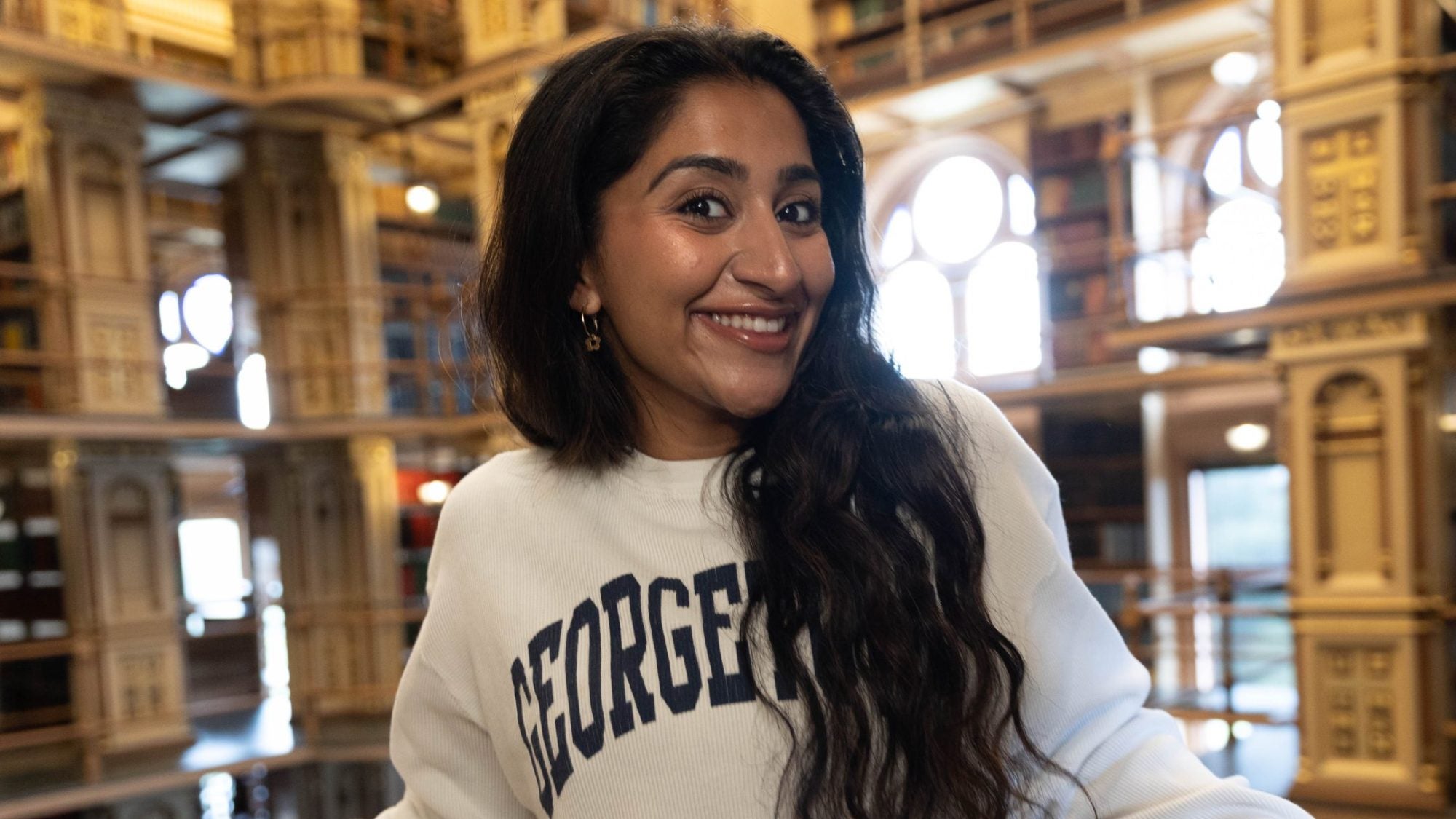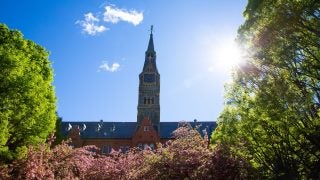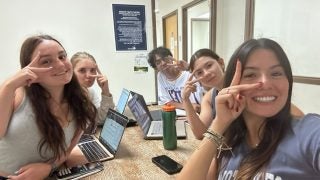Harnoor is a third-year student in the SFS studying science, technology, and international affairs with a concentration in biotechnology and global health.
At the end of each one of my Blue & Gray tours, I am approached by my apprehensive parents asking me about the pre-med program at Georgetown and my personal journey to medicine.
“Is it hard? Is it worth it? Why did you choose Georgetown for pre-med?”
Yes, yes (usually), and honestly, it chose me.
My pre-med journey dates all the way back to when I was 13, when I chose “pre-med” and my STEM high school, where we had majors. Throughout high school, I did research and enjoyed my science electives. However, as I explored opportunities, I discovered my love for policy, public speaking, and my passion for social impact. As those interests grew, I began to feel divided between medicine and policy, eventually deciding that if I wanted to work towards social change, I would need to pursue a different career, like law or policymaking. Most importantly, I believed that there was no overlap. If I wanted to pursue policy, there was no room for me to engage with health care, and vice versa.
Fast forward a few years, Georgetown has given me opportunities and spaces to not only rediscover my passion for medicine but also redefine what it means to be “pre-med.” A few key experiences have defined my journey to medicine, reminding me that policy and social impact are directly intertwined with medicine and health.
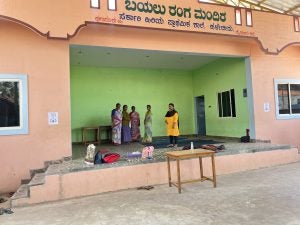 Interning in India
Interning in India
At the end of my freshman year, when I was scrambling to find an internship, I found myself searching the depths of Google, LinkedIn and Handshake. Feeling defeated, with multiple rejections and even more opportunities I had not heard back from, I decided to make one last effort. I remember googling “Global Health Opportunities in India” and clicking on the first search result.
I found the Public Health Research Institute of India, which has done incredible non-profit work on women’s health and awareness in Mysore, India. Feeling inspired, I discovered the founder’s email address and LinkedIn, and pitched myself and my interest in global health work to the organization. I’m not sure if it was luck or the persuasiveness of my message, but I found myself flying to India four weeks later to intern at the clinic. It became one of the most formative experiences of my pre-med journey.
At the Institute, I assisted with research projects focused on women’s health and qualitative analyses. After facilitating discussions with participants, I learned about the systemic inequities that impact patient care and how global health policy and impactful clinical work have the potential to shift the quality of patient care. This allowed me to develop a deep understanding of how structural health disparities affect real communities and began to spark my interest in becoming a physician who not only treats patients but also advocates for underserved populations.
EMS Training/GERMS 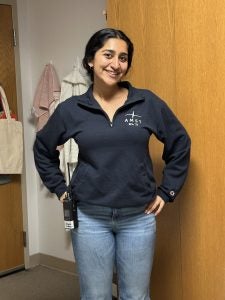
After my summer in India, I was excited to get involved in more clinical spaces on campus. I had heard about the work of the Georgetown Emergency Response Medical Service (GERMS), and I decided to take the EMT class they offered. Although I had to commit to a semester of night and weekend classes, extra study hours and a difficult cumulative exam, the clinical exposure I gained through the course proved to be invaluable. I loved shadowing in the Emergency Department and on GERMS shifts, realizing that we could have so much impact on health care efficiency and access as students. Most importantly, I realized that there was a direct correlation between clinical care and health care access, and I could see myself working in both spaces as I ventured into a career in medicine.
Global Health Institute/CGHSS
In my second semester of sophomore year, I became a fellow at the Global Health Institute, which connected me with the Center for Global Health Science and Security. At the Center, I contributed to research examining how health systems prepare for and respond to global events, such as mass migration and the COVID-19 pandemic. This work exposed me to the broader infrastructure behind medicine, including how policy, diplomacy, and surveillance shape health outcomes across borders. It has, once again, emphasized the notion that being a physician today means engaging not only in clinical care but also in global health systems that determine who gets access to that care in the first place.
Science, Technology, and International Affairs
Finally, as I began to take more major electives in my sophomore and junior years, the intersection of health and policy that I had observed in my extracurriculars started to come true in the academic sphere, as well. Classes like Medicine and Power in India exposed me to the importance of policy interventions in clinical settings and how clinicians can contribute to policymaking. Watching this interdisciplinary connection come to life has truly inspired me to continue on my non-traditional path towards medicine, which I owe largely to the range of courses and skills that the STIA department offers. This summer, I will be returning to India to work on my own research project for the STIA Honors Thesis!
As I prepare for the less glamorous parts of the pre-med journey (like the MCAT), I am grateful to be able to reflect on the opportunities that Georgetown has given me and how they have shaped my non-traditional path to medicine. If I could give one piece of advice to students, pre-med or not, it is to seek opportunities you may have never thought to engage with before. It was these unexpected experiences that ended up defining my passion for medicine and redefined my definition of what “pre-med” really means.
